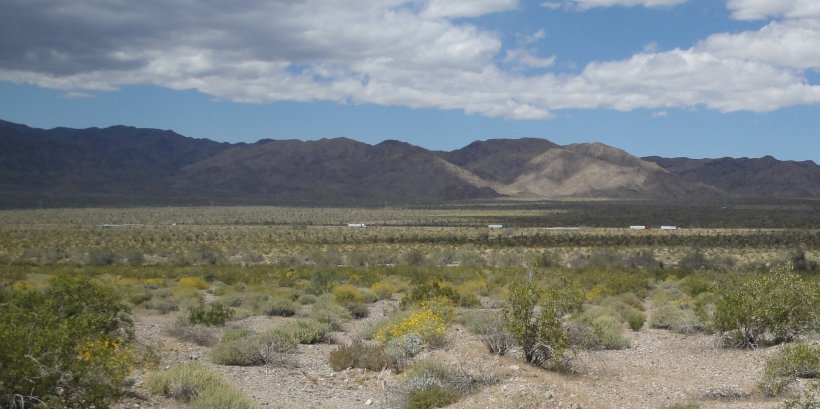
We left the Joshua Tree National Park and keep on going on a little road toward the Salton Sea. (Above is Interstate 10 in the distance.) The area is below sea level and w/o irrigation it is a hot and desolate place. With irrigation, it is a hot and productive place. This is the Imperial Valley, one of the most bountiful agricultural areas in the world, where a lot of our lettuce, grapes, berries and broccoli come from.
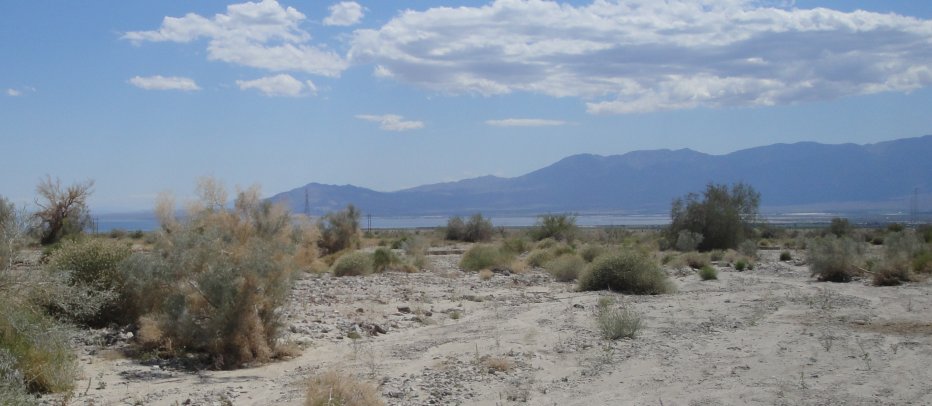
The Salton Sea is a fascinating accident related to the irrigation. In 1904 the irrigation dikes broke and almost all the water from the flow of Colorado River poured into the below-sea-level desert depression for almost three years. The escaping water had created a vast fresh-water lake. It is so big that you cannot see across it. Had they not fixed the dike, the Colorado River probably might have simply changed course and eventually found its way to the Gulf of California by alternate means. (This, BTW, happened periodically with the Mississippi. If not for human intervention, the Mississippi probably now be following the route of the Atchafalaya River, bypassing New Orleans.) Geologists say that the Salton Sea has been formed and dried up many times in the past w/o the intervention of man. You can see the Salton Sea chronology at this link.
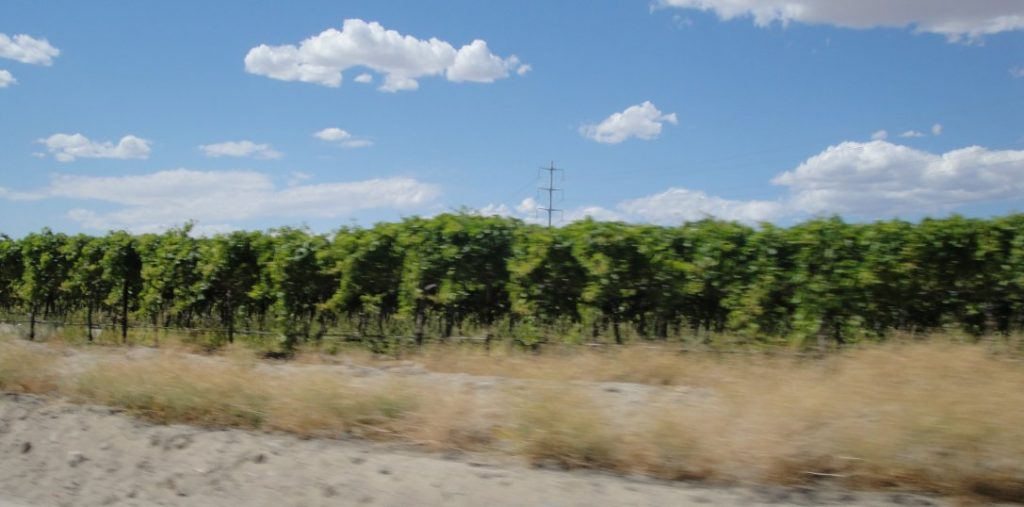
At first it was great. People put in fish and the bred fast in the warm and empty waters. But the water in the Salton Sea didn’t stay fresh for long. The salts and minerals from the lake bottom soon dissolved in the water and with no outlet to the ocean, it was in the same situation as the Dead Sea. It is getting saltier and saltier. Many of the fish are dying out. The only ones still thriving are tilapia, which can survive almost anywhere if the water is warm enough and are now being used for cat food.

The dying of the Salton Sea is a problem from several points of view. Migratory birds have become very fond of using the Salton Sea as a stopover. If it becomes a dead sea, it cannot serve that purpose. The State of California is trying to “save” the place, but it is hard to see what they could do, short of breaching the dikes again and sucking in the Colorado River. It “benefits” from some irrigation discharge, but this is not water of the highest purity. The Salton Sea is essentially a big puddle, with no reliable sources of replenishment or discharge. It is a very temporary lake and in a moment of geological time it will return to its former condition.
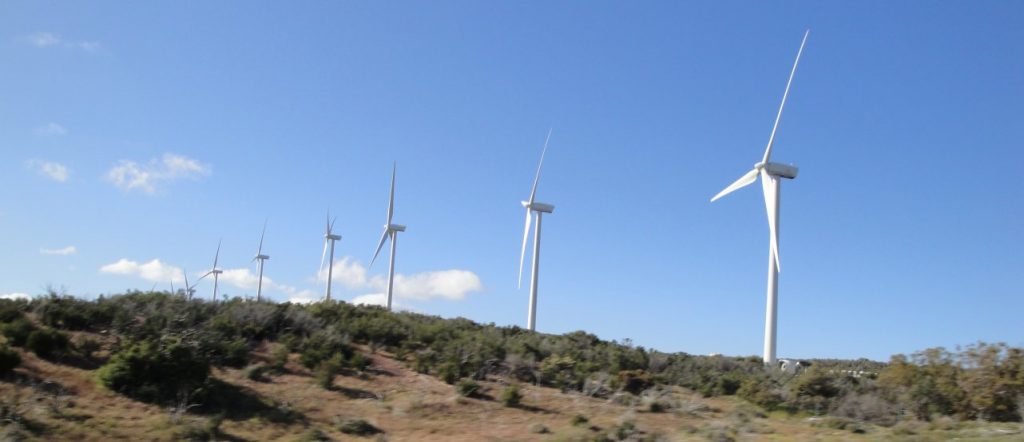
We almost got to Mexico on the last leg of the day’s journey. We caught I-8 in El Centro, California. Not too far along the road, we were stopped at an immigration checkpoint. I didn’t know they had such things except at the border.
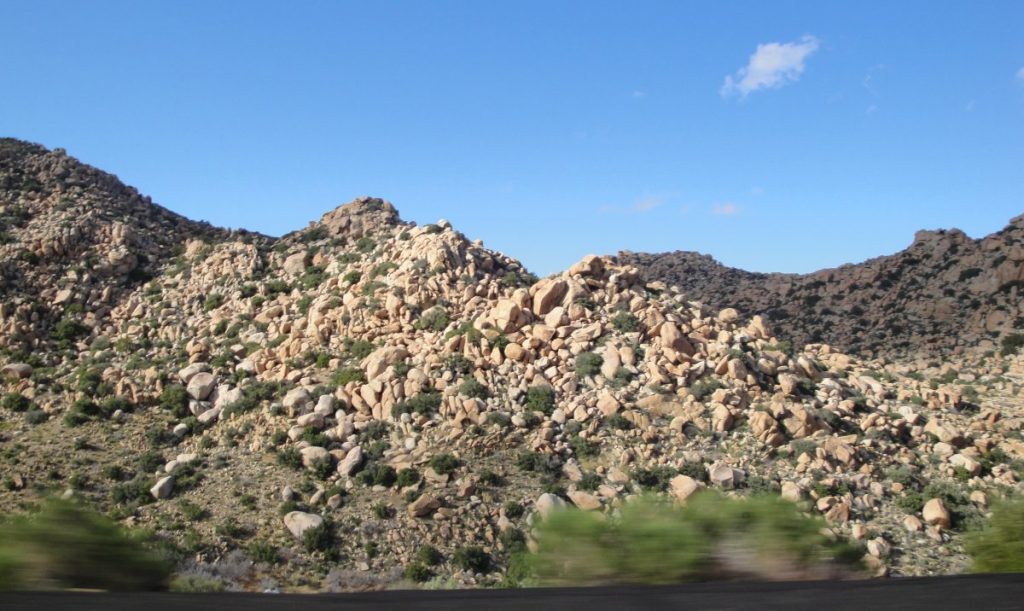
The road to San Diego is very interesting. The first set of mountains look like a pile of stones. If you didn’t know better and they weren’t so massive, you would think that humans dumped and piled these rocks. It just doesn’t look natural. As I wrote earlier, the wind really blows out here. They have signs on the roads warning about the high winds. The winds sandblast the rocks, and everything else, and knock off the rough edges.
As we got farther west, the mountains became green and beautiful. In other seasons the grass is probably brown, or golden as the Chamber of Commerce might describe it, but the green was really nice. Below is another picture of Chrissy. Sorry to post so many, but she looks good and really liked the car.
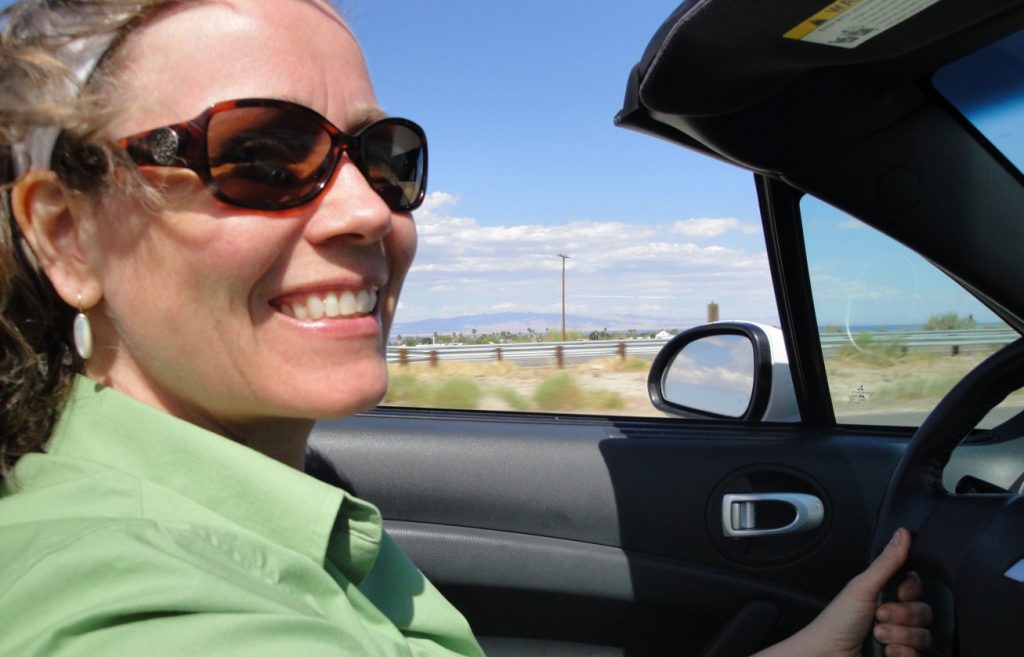
We ended up at the Courtyard Marriott at Liberty Station.This used to be a Naval Training base and now it has been redeveloped into hotels, shops and restaurants. It is very pleasant if a bit too neat, see below. Chrissy has already left for Washington. My flight is a little latter so I am writing this at the airport.It has been an interesting visit to California.

